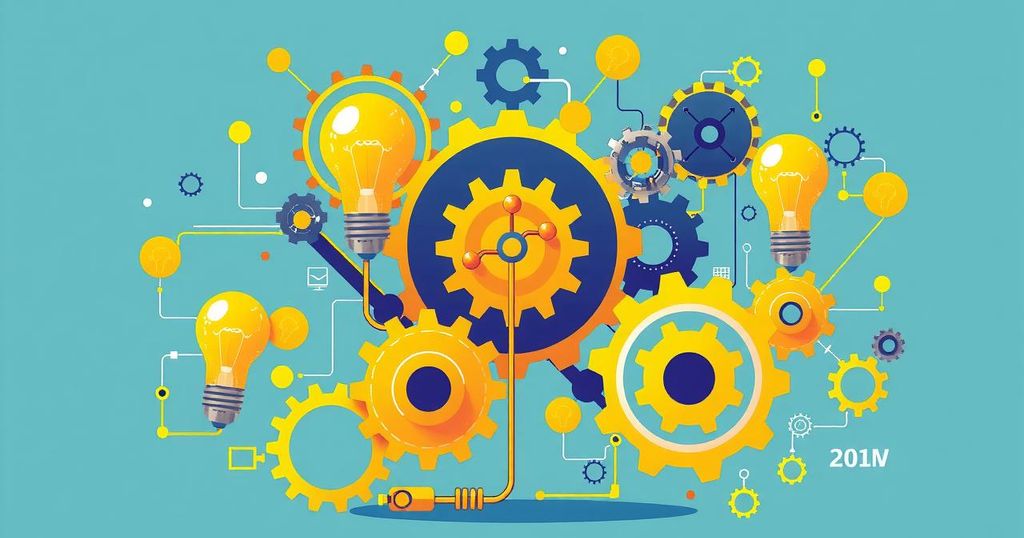National Science Day 2025: Celebrating Scientific Innovation and Youth Empowerment
National Science Day, observed on February 28, honors Sir C.V. Raman’s pioneering work. Celebrated since 1987, this year’s theme emphasizes empowering youth for global scientific leadership. India’s advancements in science and tech have propelled it to notable global rankings, casting a spotlight on inclusivity and innovation as it aims for a developed and self-reliant future by 2047.
Every year on February 28, India observes National Science Day. This annual event commemorates a landmark moment in scientific history—Sir C.V. Raman’s discovery of the ‘Raman Effect’ in 1928. This pivotal moment won him the Nobel Prize in Physics in 1930, making him the first Indian recipient of a Nobel in sciences. Established in 1987, National Science Day has transformed into a key occasion for promoting scientific inquiry and innovation throughout the nation.
This year’s theme is “Empowering Indian Youth for Global Leadership in Science & Innovation for VIKSIT BHARAT.” It underscores the essential role of the youth in steering India toward becoming a global powerhouse in science and technology. With a clear roadmap to Viksit Bharat 2047 in sight, the initiative aims to inspire and empower young minds, pushing them to take charge of scientific and technological advancement.
National Science Day has specific objectives: primarily to create awareness about science’s importance in daily life. It’s also about showcasing achievements while motivating the public to embrace science and inspiring the next generation to dive into careers in research and innovation. Each year, it aims to popularize science beyond the academic realm.
Looking back, 2024 was a significant year for India’s science and tech sectors. Notably, India claimed the 39th spot in the Global Innovation Index and ranked 6th globally for Intellectual Property (IP) filings. These rankings reflect the country’s rapidly expanding role in innovation. Also, India climbed from 79th to 49th in the Network Readiness Index, showcasing swift progress in digital transformation and its ICT infrastructure.
The Anusandhan National Research Foundation (ANRF) is key in creating an inclusive research environment. Programs such as the PM Early Career Research Grant (PMECRG) and the Inclusivity Research Grant (IRG) specifically support young and underrepresented researchers. Plus, India’s Electric Vehicle (EV) Mission is stirring up exciting innovations in the electric vehicle tech space.
Quantum technology is on the rise with the National Quantum Mission (NQM), bolstered by a Rs. 6003.65 crore investment. Researchers across 43 institutions are already making strides in quantum computing, communication, and sensing technologies. India’s computational capacity grew to an impressive 32 PetaFlops through the National Supercomputing Mission, with plans to enhance this to 77 PetaFlops using homegrown technology. Supercomputers in Pune and Kolkata are enhancing research capabilities, and BharatGen is even pioneering India’s first multilingual AI Language Model (LLM).
In schools and colleges, geospatial technology education reached new heights, engaging over 6,200 students across seven states. More initiatives like this are in the pipeline for the upcoming year—education continues to be a focal point.
On the climate front, India is stepping up its game with the establishment of four Centres of Excellence to focus on flood and drought risk mapping. These centers are expected to fortify disaster preparedness strategies and promote sustainability efforts across the country.
The INSPIRE program, aimed at nurturing young scientific minds, is also expanding. In 2024, it supported 34,343 INSPIRE Scholars, 3,363 Fellows, and 316 Faculty Fellows. Notably, a staggering 1,013,157 nominations for the INSPIRE-MANAK competition show how far this initiative is reaching—especially among high school students.
Further, India is making strides in closing the gender gap in STEM fields through programs like WISE-KIRAN, which aids women in scientific research. Initiatives such as the WISE-PhD and Postdoctoral Fellowship programs elevate women’s opportunities in science, while the Vigyan Jyoti Program encourages young girls to embark on STEM careers. These efforts reflect a growing commitment to inclusivity in science education and research.
In conclusion, National Science Day serves as a celebration of scientific achievement in India, honoring Sir C.V. Raman’s transformative contribution to physics. The theme for 2025 emphasizes the empowerment of youth as keys to India’s scientific future, with significant milestones already achieved in various fields. Efforts to include underrepresented groups nod towards a broader vision of inclusive growth. As India marches toward 2047, the endeavors in science and technology illustrate a commitment to crafting a resilient, innovative future.
Original Source: ddnews.gov.in




Post Comment